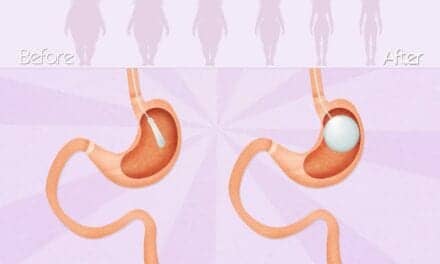By Ed Susman
(DENVER)—Barbed absorbable sutures that work similarly to Ziploc bag technology appear to quickly and effectively close wounds in patients with a variety of skin conditions with good cosmesis.
In a poster presentation at the 72nd annual meeting of the American Academy of Dermatology in Denver, John Strasswimmer, MD, PhD, medical director of melanoma and cutaneous oncology at the Lynn Cancer Center, Delray Beach, Florida, illustrated how the new technology closes wounds in older patients with frail skin and in obese patients with thick skin.
At the presentation, he showed videos of how the sutures were used to close gaping wounds, and how the wounds appeared a few months later—demonstrating good cosmesis.
“The sutures are laced through the skin without the need for undermining,” says Strasswimmer, also research professor of biochemistry at Florida Atlantic University, Boca Raton. “Then we pull the end of the suture and tiny barbs attacked to the skin and we pull the wound closed.” He says the procedure is akin to lacing up sneakers or a Victorian lady’s corset—hence, its name, the Corseta, Strasswimmer says.
“The Corseta procedure is well-suited for the closure of challenging skin cancer surgery defects,” he says.
“In skin cancer surgery, the excisional defect requires tension to close the wound. Many wounds are hard to close. First, in fragile tissue knots may tear through the skin due to atrophic dermis. Second, areas of high tension such as trunk defects may be hard to close because undermining may be limited due to anticoagulant status,” he says, adding that the barbed sutures provide evenly distributed tension, allowing safe closure of these wounds.
Strasswimmer says that he has used the barbed sutures in more than 800 patients in his Mohs surgery practice. He reported on 414 of these patients, 193 of whom underwent treatment for axial defects; 90 patients were treated for wounds on the face; 50 cases involved the hands or feet; 27 patients were treated for neck wounds; and 6 patients underwent treatment for scalp wounds.
In the case series, there were 14 complications and 14 patients required postoperative analgesia in addition to what was anticipated during the patients’ recoveries. “We did not have to remove any sutures in any of these cases,” he says. For patients who experienced infection, Strasswimmer said incision and drainage was accomplished in a manner similar to that used for patients treated with interrupted sutures.
In the prospective case series, Strasswimmer says he first used products developed by Angiotech and Ethicon Inc, but has since transitioned to second generation products V-loc 90 and V-loc 180 from Covidien Inc.
“I find these sutures are easier and faster to use; they do not require the surgeon to create knots, and there is no need to perform skin undermining,” he says.
He said the conventional sutures cost about $8 to $10, and the barbed sutures are about $25, but the time saved in using the barbed sutures may make up for the additional cost.



